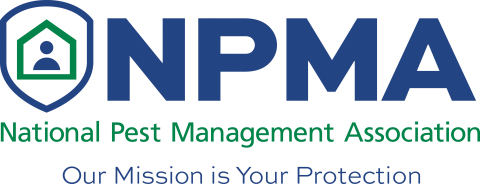FAIRFAX, Va.--(BUSINESS WIRE)--The National Pest Management Association (NPMA) today released its bi-annual Bug Barometer® forecast, a seasonal projection of the pest pressure and activity Americans can expect to see in their respective regions of the country based on weather patterns, long-term forecasts and pest biological behaviors. According to the group’s entomology team, a mild, dry summer season could cause increased pest activity throughout much of the U.S. as forecasts show looming predictions for below-average temperatures and increased snow this winter.
“Weather patterns across the U.S. were quite mixed this summer. Some areas experienced quite normal, mild climates while others like the South were met with record rainfall and historic drought in the West,” said Jim Fredericks, Ph.D., chief entomologist for the NPMA. “This weather mix has allowed pest populations to thrive and the impending cold spell for much of the U.S. will likely send pests into homes in search of food and shelter this winter.”
Increased pest pressure comes with some serious health risks as ticks, cockroaches and rodents can transmit dangerous germs and diseases to humans. “Prevention is key this time of year, especially as it pertains to keeping cockroaches and rodents out of your home,” added Fredericks. “Mice and rats invade an estimated 21 million U.S. homes each winter seeking respite from the bitter cold and snow, so be sure to eliminate any areas of moisture found in the home and be sure to keep your kitchen clean, storing food in airtight containers to keep pests out.”
Based on this analysis, the National Pest Management Association’s Fall & Winter 2022 Bug Barometer is forecasting an increase in pest pressure across the entire U.S. this season:
Northeast & New England
Expect relief from mosquitoes and stinging insects when cooler fall temperatures move into the region. However, average fall temperatures could allow tick activity to remain high into the early winter months. Look for rodents to begin moving indoors in search of shelter and resources as temperatures continue to drop.
Southeast
If fall and winter temperatures are colder than average as predicted, expect rodent activity to increase sooner than usual as rodents look to find shelter indoors.
Great Lakes, Ohio Valley & Midwest
Prepare for overwintering pests such as stink bugs to begin invading structures as average fall temperatures move into the region. Average temperatures and precipitation could also allow tick pressure to remain high throughout fall. Significantly below-average temps predicted this winter will likely drive rodents indoors early.
North Central U.S.
Below-average fall temps could drive occasional invaders like boxelder bugs into structures early in search of shelter. Similarly, prepare for an increase in mouse activity sooner if temperatures drop earlier this fall.
South Central U.S.
Warmer-than-average fall temperatures could allow ant and cockroach activity to persist well into the fall months. This region should also prepare for tick activity to remain high until temperatures drop below freezing.
Southwest U.S.
If warm fall temperatures persist, expect insects such as cockroaches and centipedes to remain active well into fall. As cooler temperatures finally settle into the region, prepare for an increase in rodent activity.
Northwest U.S.
Despite the prediction of a mild winter in this region, expect to see mouse activity increase this fall as rodents look to homes, sheds, and even vehicles for shelter ahead of winter.
“With the help of our Bug Barometer®, Americans can better prepare for increased pest populations as we head into the late fall and early winter months,” said Fredericks. “Be sure to seal cracks and holes on the outside of the home and store boxes off of the floor to prevent pests from residing in undisturbed areas.”
Above all, Fredericks encourages consumers to contact a pest professional if an infestation is present.
For more information about pests or NPMA’s Bug Barometer® forecast, visit PestWorld.org.
About the National Pest Management Association
The NPMA, a non-profit organization with more than 5,500 members, was established in 1933 to support the pest management industry's commitment to the protection of public health, food and property from the diseases and dangers of pests. For more information, visit PestWorld.org or follow @PestWorld on Facebook, Twitter, Pinterest, TikTok and YouTube.




